
By Robert Burgess
THBG Senior Communications Manager
I was going to write about how to start seeds at home and I quickly realized that information would be the length of a book and in fact many excellent books have been written on the topic by people far more qualified that me. So instead I offer below a few DIY hacks (that I use to save time and money) based on trial and error after about a decade of starting seeds for my home kitchen garden. I’m not an expert, just an enthusiast, but I’ve had our Horticulture Department vet my tips to ensure I’m not leading you astray.
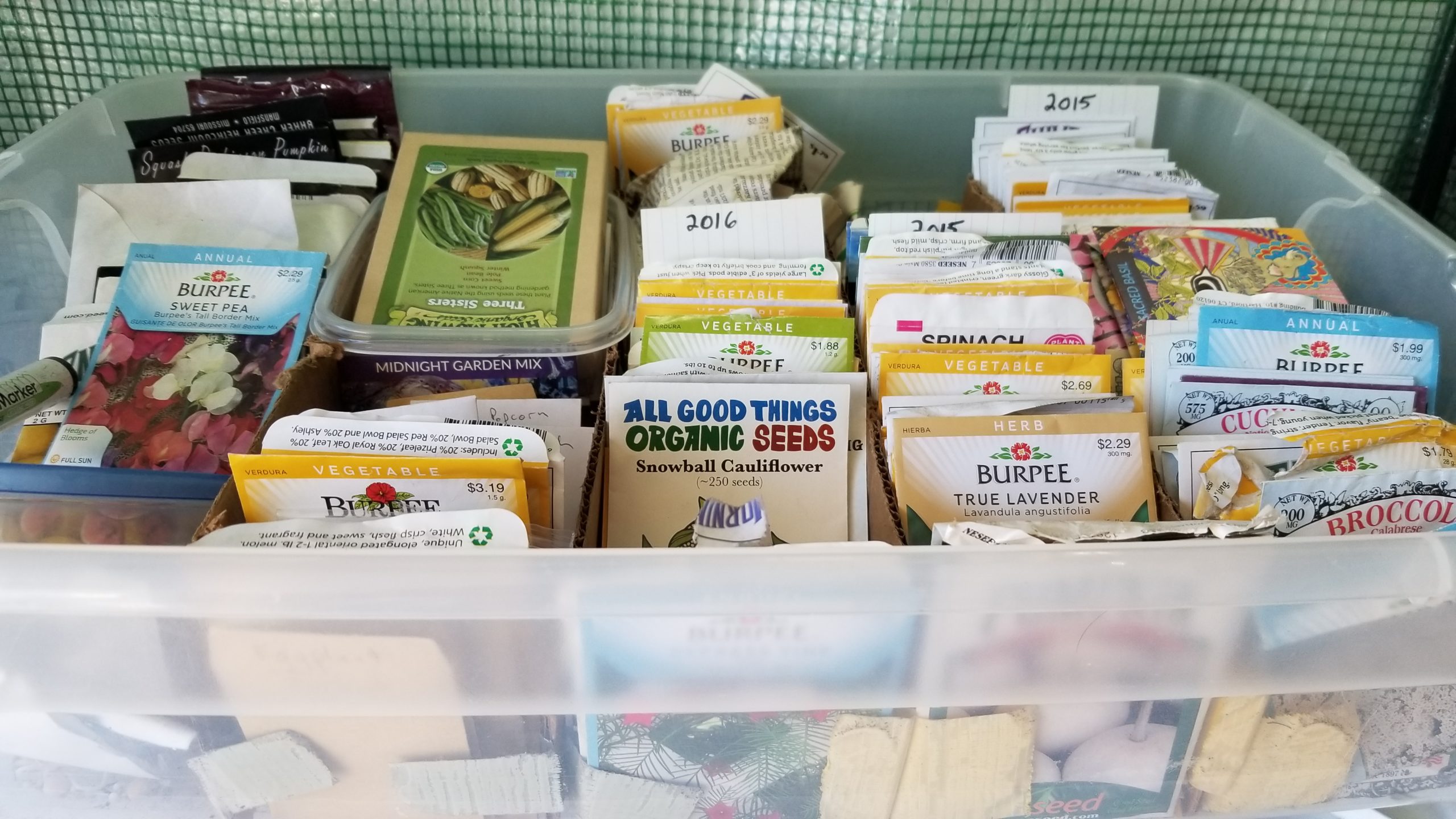
- I’m opportunistic about where I get my seeds. I buy a lot of my seed packets from the Garden Shop at New England Botanic Garden at Tower Hill. But I also looks for sales at the end of the growing season, usually in the fall when retailers offer steep discounts. I then put the seeds in a plastic container with a sealed top to store in my cool basement. I organize by year knowing the older seeds will have a lower germination rate. (If you’re looking for seeds now, I suggest googling seed sellers located in the Northeast and placing an order to have shipped to your home.)
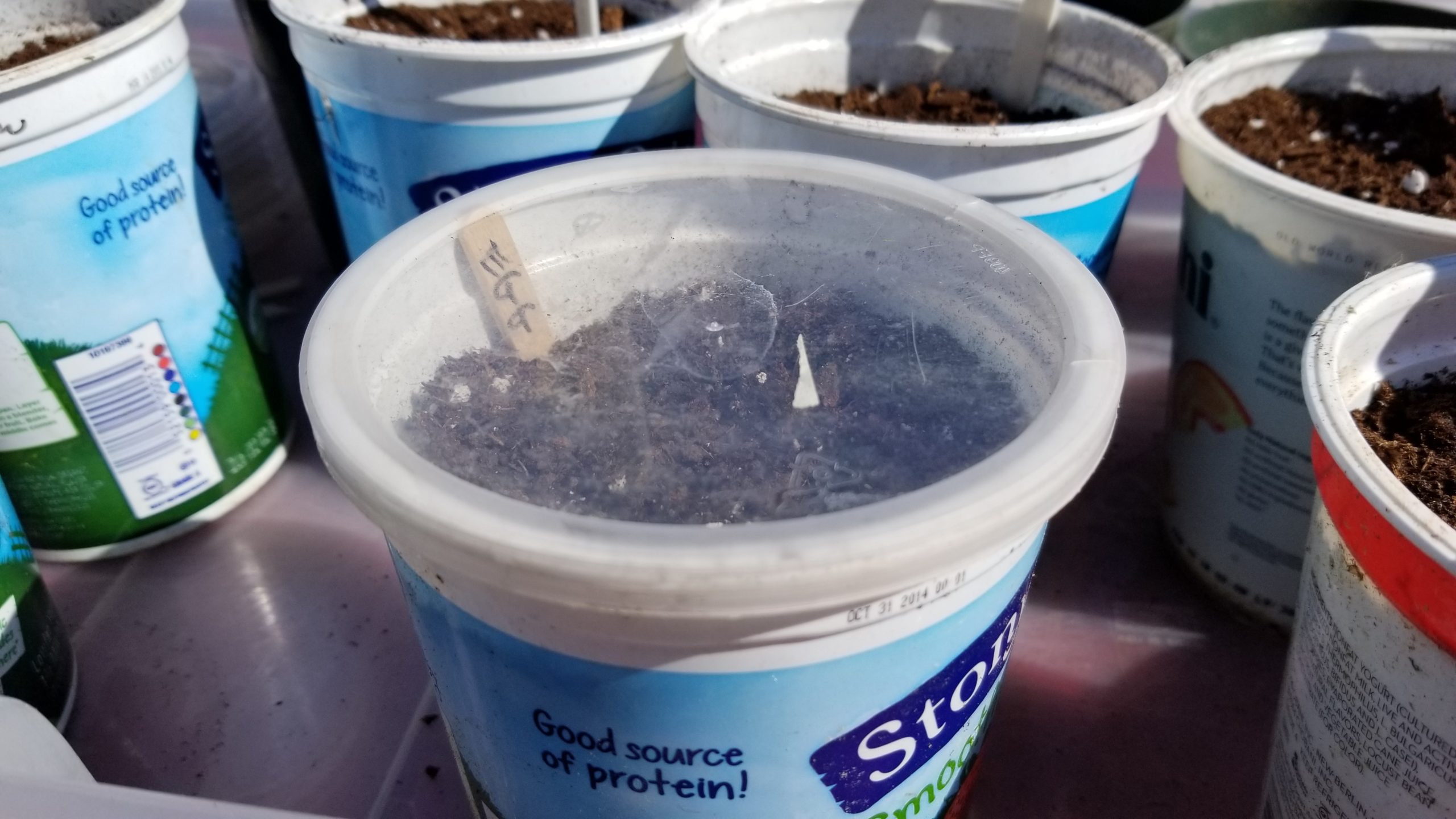
2. I’ve tried all kinds of containers, based on solid advice from experts, but my favorite method is using 32 ounce upcycled yogurt containers with holes drilled in the bottom. Because I only need two or three tomato plants, I can skip the smaller seed tray method and plant my seeds right into medium sized containers. Also, to aid with germination, I use the clear tops to create miniature greenhouses. This helps keep the soil moist and warm and encourages the seeds to emerge.
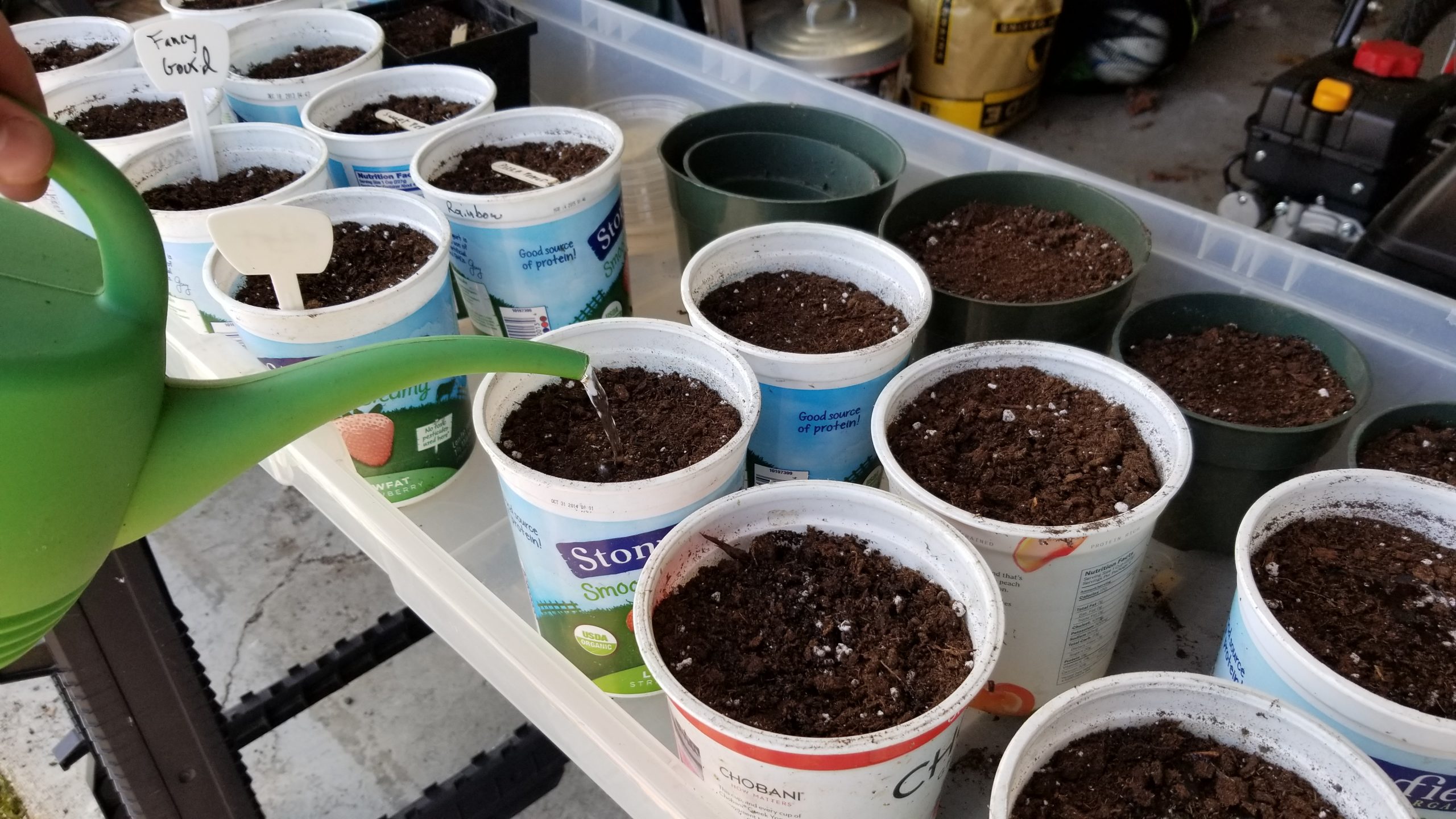
3. I use organic potting soil to keep the seedlings happy until it’s time to be planted into my garden beds. (Again, skipping the inert seed starting mixtures used for large tray operations.) I set everything up in the garage because it can get messy, before bringing the seeded containers inside. Follow the instructions on each seed packet about when to start various types of plants by seed. When you enter you zip code into this chart, it tells you when to sow seeds indoors, when to transplant seedlings outside, and when to direct sow seeds right into the garden.
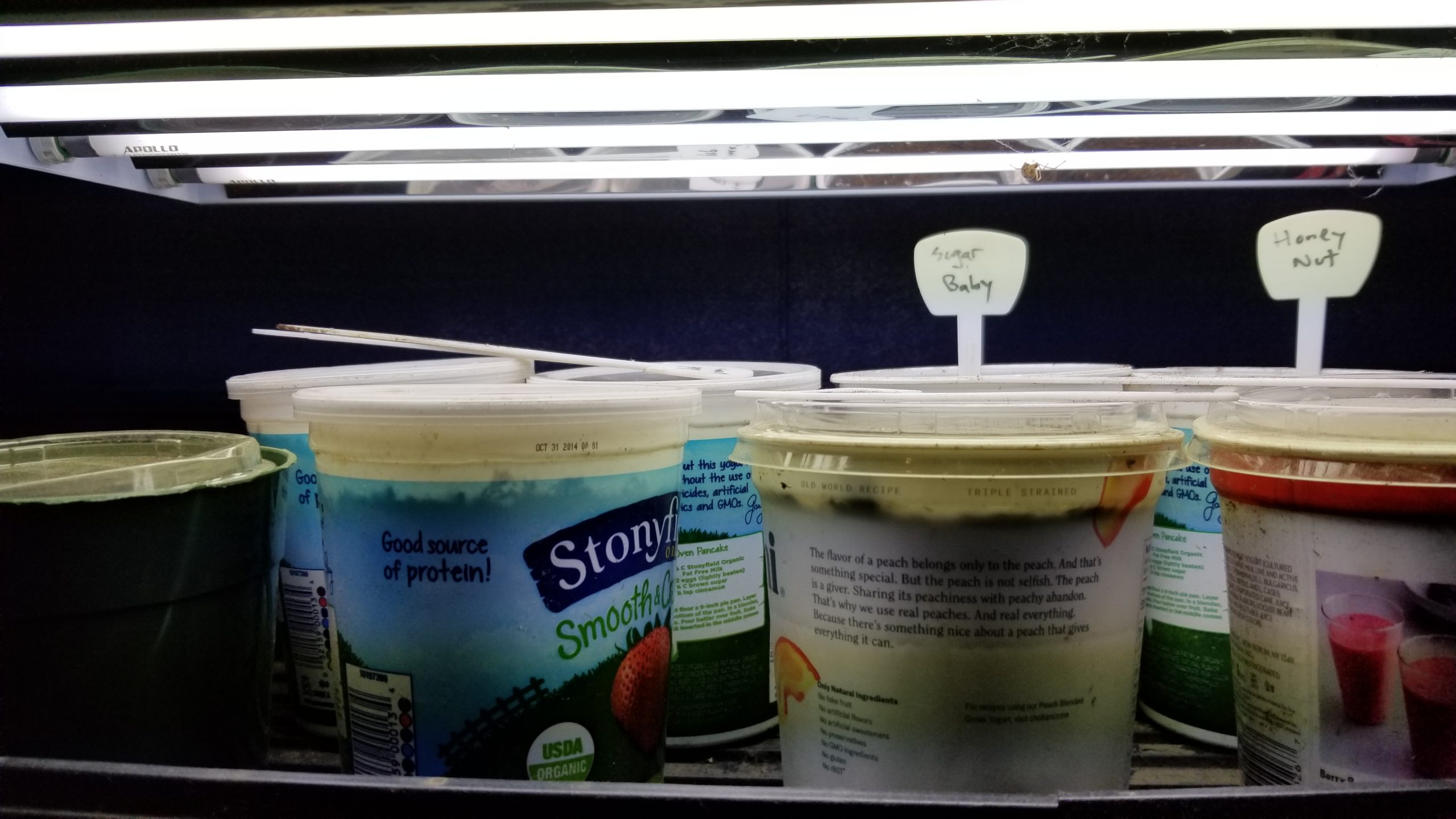
4) This might be the most important tip. I’ve tried growing seedlings on window sills. I’ve tried setting things up out of the way in the basement. But I end up with stringy, weak plants. I discovered I needed to invest in some grow lights that I hang on a shelf in front of a window. This gives the plants the warmth and light they need to grow strong.
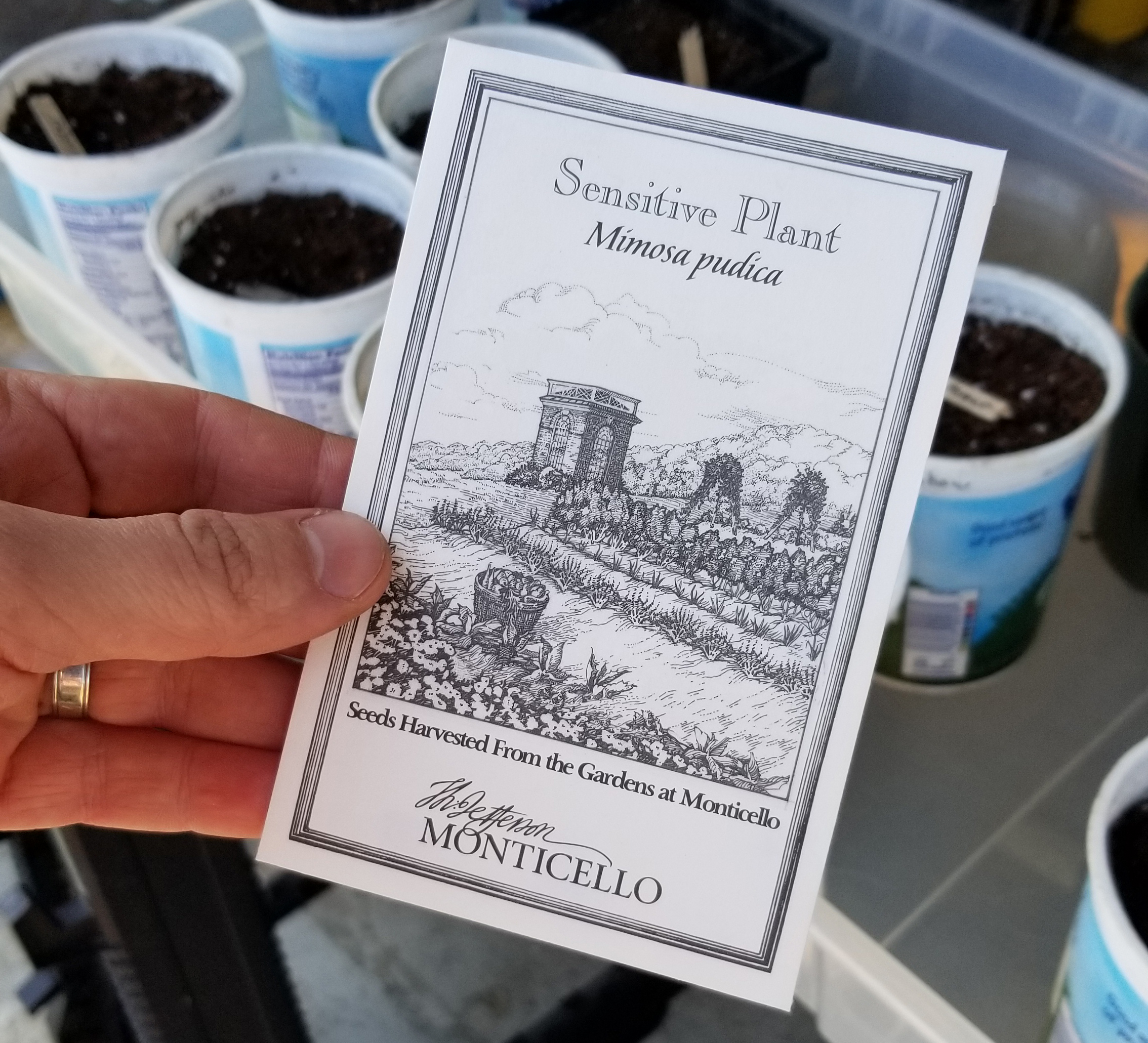
5. My last tip, hearkens back to the first. On a road trip to Monticello last summer my family stumbled upon something called the Sensitive Plant. It moves when you touch it! In the gift shop, we saw that they had Sensitive Plant seeds and we picked up a packet to store over the winter. We’ve now put a few seeds in these yogurt containers to see if we can grow this plant ourselves. So, tip Number 5 is: experiment! I’ve grown cotton, peanuts, quinoa, and all manner of oddities just for fun. Try new things and see what works for you.
